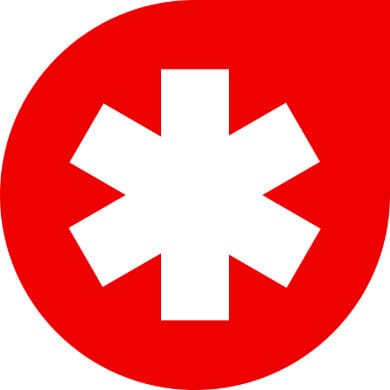
Diagnosis
Primary Diagnosis
I618 Other intracerebral hemorrhage
Secondary Diagnosis
G811 Spastic hemiplegia
History
Onset of stroke and initial treatment
Patient A, a 49-year-old female of Mongolian nationality, collapsed due to stroke on February 20, 2025. At the local hospital emergency room, a procedure was performed to remove the hematoma by drilling a small hole in the skull. Due to the severe size of the hematoma, the surgical prognosis was poor, and the patient developed right-sided hemiplegia and dysarthria.

Her husband decided to pursue her rehabilitation treatment overseas. After researching several hospitals, he ultimately chose a Korean medical institution. The husband submitted his wife’s medical records related to her stroke to the international medical center of the Korean hospital. Two days later, they received a treatment plan and estimated medical costs.
Medical tourism visa and arrival in Korea
CNS Korea provided visa application documents for the patient and her husband, including an invitation letter and medical appointment confirmation, to support the patient’s medical tourism visa application. On April 5th of the same year, they came to Korea for the first time. The very next day, they visited the hospital and received an initial consultation in the Department of Rehabilitation Medicine.
The specialist prescribed an MRI/MRA scan to observe the current state of the cerebral vessels and requested a consultation with the Department of Cardiology to confirm the association with hypertensive stroke. The test results showed no apparent possibility of intracranial vascular bleeding due to a cerebral arteriovenous malformation.
Additionally, while traces of the left cerebral hemorrhage appeared white on the MRI images, their size had decreased by approximately 30% compared to images taken immediately after stroke in Mongolia. Blood pressure was slightly elevated. Since the composition of the heart-related medication brought from Mongolia was unknown, it was decided to prescribe new medication after consultation with the cardiology department.
Intensive rehabilitation therapy with Korean traditional medicine
The patient was admitted as per the treatment plan provided before arriving in Korea and received intensive rehabilitation and physical therapy twice daily, once in the morning and once in the afternoon. However, speech therapy was excluded due to the patient’s native language being Mongolian.

To maximize treatment effectiveness, traditional Korean medicine therapy was also incorporated. The patient received treatment once daily using Korean medical methods such as acupuncture, moxibustion, and herbal decoctions. The patient inquired whether she could also undergo a comprehensive health checkup, including a gastrointestinal endoscopy, while in Korea. The rehabilitation medicine specialist explained that once the patient’s blood pressure stabilized and her medication was finalized, she could undergo the health checkup, including the endoscopy, even during the rehabilitation treatment.
A female patient sharing the same hospital room was also hospitalized for similar symptoms following her stroke and was receiving intensive treatment for a month. Initially, that patient could not move at all due to paralysis and had severe dysarthria, making speech difficult. However, after treatment, she can now walk independently, and her facial paralysis has significantly improved. Therefore, the medical staff encouraged patient A, stating that if she actively engaged in rehabilitation therapy for a considerable period, she could also achieve good results.
Results
When patient A arrived in Korea, she was in a wheelchair due to post-stroke complications: slurred speech, difficulty opening and closing her hands, and inability to walk. The patient received acupuncture and moxibustion treatments at the hospital, along with consistent physical therapy and manual therapy at the rehabilitation center.
After more than two weeks of treatment, the patient’s physical condition visibly improved. Now, one month post-treatment, she speaks much more easily, can open and close her hands well, and has regained the ability to walk independently. The patient expressed deep gratitude to the medical team who treated her carefully, leading to such noticeable improvement, as well as to all the staff who assisted with the treatment.
Being a Mongolian national, communication could have been difficult, but the patient felt even more grateful seeing the medical staff and employees always being kind and making an effort to communicate.
The patient and her husband will soon return to Mongolia as their visa period to stay in Korea is ending. Satisfied with the treatment results, they plan to obtain a medical tourism visa again in two months and revisit the hospital for further rehabilitation therapy.
#Come and See Korea
C&S Korea is your gateway to exceptional medical tourism in Korea, connecting you with world-class healthcare providers.
From life-changing surgeries and innovative treatments to holistic wellness programmes, we offer bespoke solutions designed just for you.
Our dedicated team will ensure your comfort and safety every step of the way, guiding you through your journey.
It’s not just about healthcare. Experience the vibrant culture, delicious cuisine and serene landscapes that make Korea a unique destination, too.
Visit www.cnskorea153.com today or email us at cnskorea153@gmail.com to let us know what you need!


